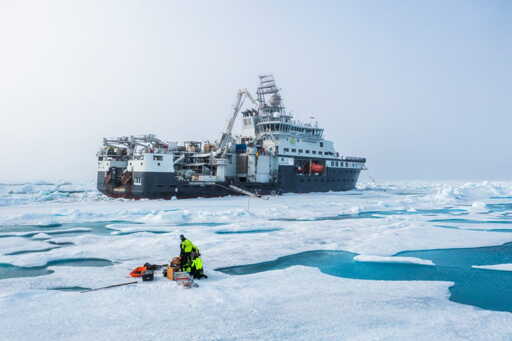Powerful winds are ripping through the Arctic, breaking up critical sea ice that once acted as a shield against disturbance from wind and waves. Scientists warn the loss of sea ice is speeding up the region’s ecological collapse and could disrupt weather patterns far beyond the Arctic, contributor Sean Mowbray reported for Mongabay. In the Arctic, deeper waters are warmer than the freezing surface temperatures. So when powerful wind forcefully stirs the water, it pulls warmer water up. That warmer water raises the air temperature, making the atmosphere less stable and potentially strengthening winds. Those stronger winds break up sea ice and bring warmer water to the surface, creating more melting — a positive feedback loop that accelerates both Arctic melting and wind intensification. “What we’re seeing now is that, as the Arctic is warming up, we’re transitioning to much more of a seasonal sea ice cover with more open water,” Morven Muilwijk, a physical oceanographer with the Norwegian Polar Institute, told Mowbray. “Stronger winds mean more drag on the ice and the ocean.” Arctic cyclones have grown stronger in recent years, in terms of both intensity and duration. In 2012, 2016 and 2022, intense storms shattered large amounts sea ice, leaving fragments dispersed and more vulnerable to melting. It’s possible these cyclones are accelerating a shift to an ice-free Arctic in summer, Steven Cavallo, professor of atmospheric sciences at the University of Oklahoma, U.S., told Mowbray. “There’s still a lot of unknowns … because there’s so many changes happening…This article was originally published on Mongabay
From Conservation news via this RSS feed


